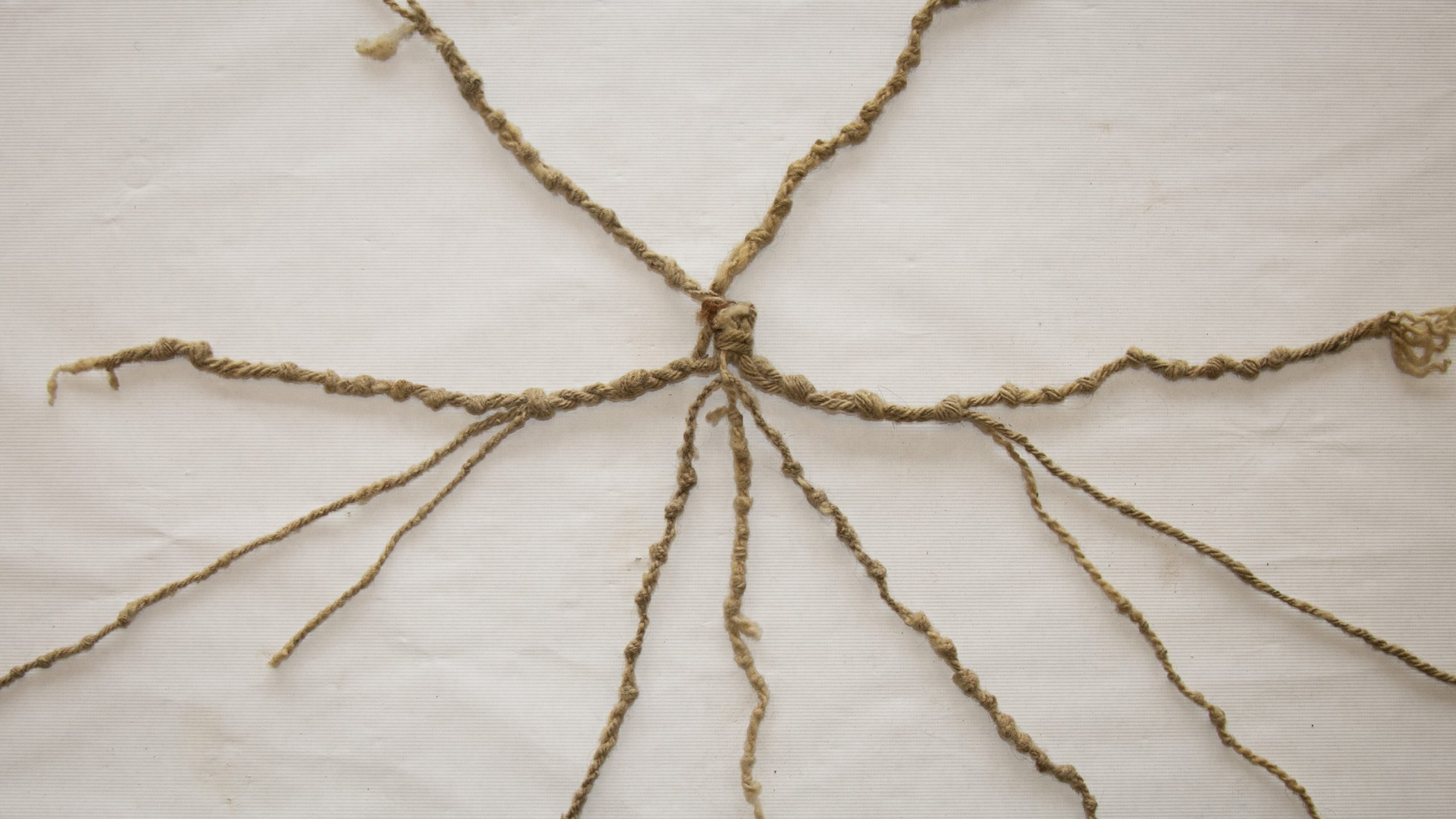Introduction to Khipus
The intriguing method of record-keeping among pre-Columbian Andean cultures is primarily captured through khipus (or quipus), which highlight a captivating story of communication and data management. This article delves into the charming nuances of this ancient practice, focusing primarily on one notable example—the Cutusuma khipu housed in the Penn Museum.
Understanding the Khipu
Tucked away within the vast collections of the Penn Museum is a seemingly modest bundle of tan knotted cords, cataloged as object 36392. Although it may appear unremarkable at first, the Cutusuma khipu is a rare artifact, representing the knotted record-keeping system of Andean cultures. It is crucial for understanding how these civilizations documented various aspects of their daily lives.
The majority of khipus found in the Penn Museum date back to the Inka Empire (c. 1400–1532), characterized by their intricate knots and cords, unlike the traditional script-based documentation observed globally. While written scripts never emerged in the Andes, khipus served to encode a wide range of information—primarily numerical but possibly extending to narratives as well.
The Historical Context
Spanish accounts from the early colonial era provide invaluable insights, describing how Inka khipus recorded census data, tribute counts, and storehouse inventories. Some even propose that these devices were utilized to document songs and historical events. However, the absence of written records before the conquest renders khipus our most significant source of pre-Columbian documentation.
The Cutusuma Khipu: A Contemporary Example
Following the Spanish arrival in 1532, scholars have pondered the meanings behind khipus, leading to extensive attempts at decoding them. Among the collection, the Cutusuma khipu stands out, having been crafted in 1894 in the Bolivian highlands by a local official for tracking milking cows and sheep. Notably, thanks to detailed field notes from the archaeologist who recovered it, the meanings of its cords and knots are precisely understood, making it a unique asset in Andean archaeology.
Acquisition and Significance
Max Uhle, an influential figure in Peruvian archaeology, acquired the Cutusuma khipu during the William Pepper Peruvian Expedition funded by Phoebe A. Hearst. This expedition, which took place in April 1895, aimed at collecting archaeological and ethnographic materials from the Andes. Uhle documented his insights regarding the khipu in the December 1897 issue of the Museum Bulletin, laying groundwork that has significant implications for modern khipu studies.
Diving Deeper Into Its Context
In a delightful twist of fate, the Cutusuma khipu became a focus of interest for many researchers, including L. Leland Locke, a key contributor to khipu research in the early 20th century. Locke recognized the value of Uhle’s findings and sought information regarding its whereabouts in 1920. Fast forward to today, the Cutusuma khipu remains safely housed in the museum, continuing to fascinate scholars and visitors alike.
Learning from the Artifact
Intrigued by the Cutusuma khipu, researchers devoted hours to understanding its significance. The experience of interacting with a comprehensible khipu was both exhilarating and educational. This opportunity allowed for a unique exploration into the world of pre-Columbian civilizations, reaffirming the importance of artifacts in learning about their history.
The Legacy of Khipus
While more than 1,300 khipus exist in museums globally, the puzzle of how they fit into the broader spectrum of Andean life continues. Although the relationship between khipus and contemporary documents remains elusive, the Cutusuma is a shining example of how practicality intertwined with culture in daily life. It ensures that the legacy of these unique record-keeping practices will endure.
Conclusion: The Personal Appeal of Experience
The story of the Cutusuma khipu captivates not only those interested in archaeology but also those who engage in travel and cultural exploration. Even with the best reviews and honest feedback, nothing compares to personal experience. On GetExperience, unique adventures await, offering numerous experiences from verified providers at fair prices. By exploring the stunning stories and intricate traditions tied to places of interest, travelers can truly benefit from the extensive choices and tailored experiences offered. Ready to Discover? GetExperience.com
In wrapping up, the significance of the Cutusuma khipu underscores the importance of understanding adventure activities, interactive online cultural workshops, and museum tours with live guides that enhance our grasp of ancient traditions, all of which blend artfully with modern travel experiences. As travelers embark on their journeys, letting the past illuminate the present enriches their adventures, making each story worth telling.

